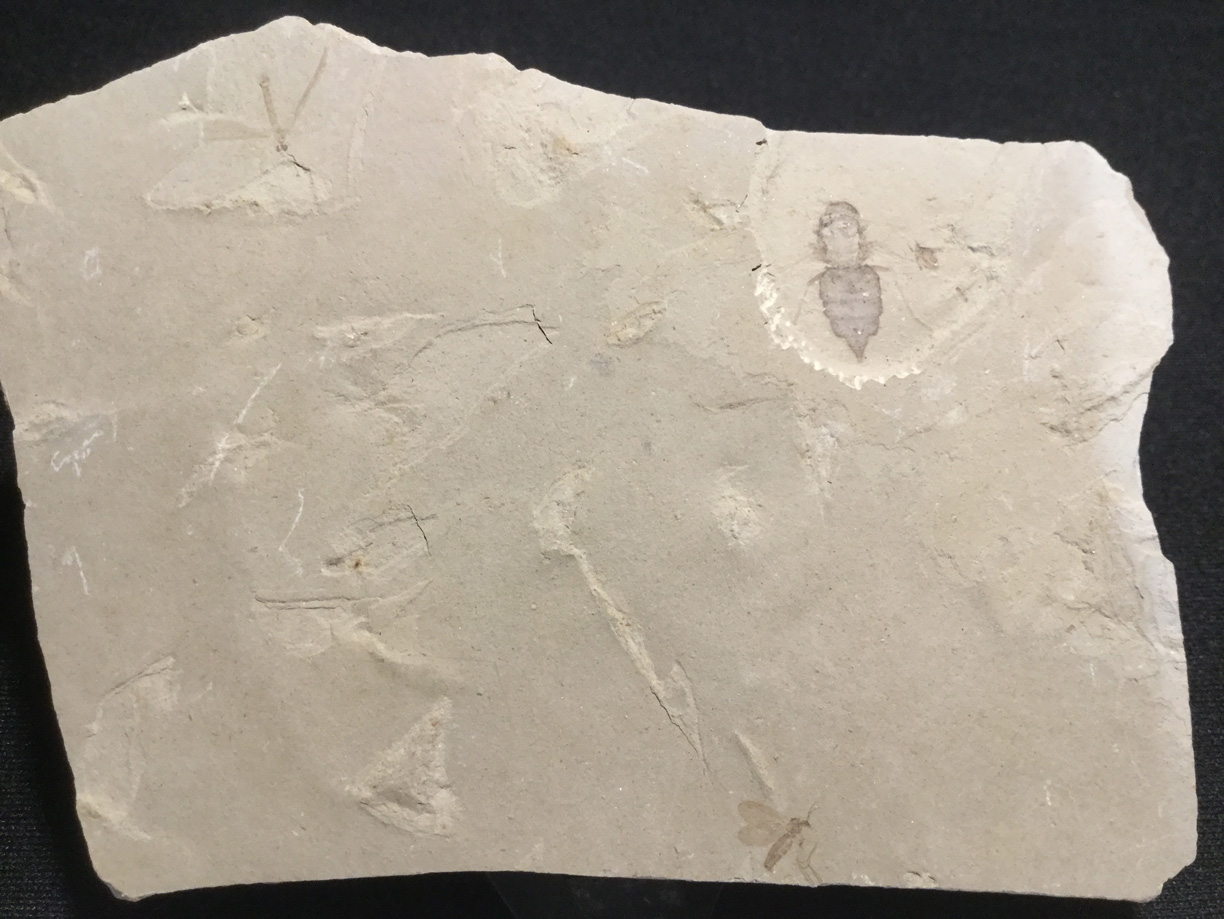
Eocene Green River Multiple Insects
Undescribed True Bug (Hemiptera)
Green River Formation
Parachute Creek Member
Middle Eocene
Uintah County, Utah
Green River Formation
Parachute Creek Member
Middle Eocene
Uintah County, Utah
Here is a very well preserved undescribed representative of the Order Hemiptera or True Bugs. The entire body has excellent detail and legs are visible. Also on the slab are very good examples of the crane fly Tipula spoliata and the gnat Sackenia sp. This is a very nice assemblage of insects from the Parachute Creek Member.
The Hemiptera or true bugs are an order of insects comprising some 50,000 to 80,000 species of groups such as the cicadas, aphids, planthoppers, leafhoppers, and shield bugs. They range in size from 1 mm (0.04 in) to around 15 cm (6 in), and share a common arrangement of sucking mouthparts.[3] The name "true bugs" is sometimes limited to the suborder Heteroptera. Many insects commonly known as "bugs" belong to other orders; for example, the lovebug is a fly, while the May bug and ladybug are beetles.
Most hemipterans feed on plants, using their sucking and piercing mouthparts to extract plant sap. Some are parasitic while others are predators that feed on other insects or small invertebrates. They live in a wide variety of habitats, generally terrestrial, though some species are adapted to life in or on the surface of fresh water. Hemipterans are hemimetabolous, with young nymphs that somewhat resemble adults. Many aphids are capable of parthenogenesis, producing young from unfertilized eggs; this helps them to reproduce extremely rapidly in favorable conditions.
The Hemiptera or true bugs are an order of insects comprising some 50,000 to 80,000 species of groups such as the cicadas, aphids, planthoppers, leafhoppers, and shield bugs. They range in size from 1 mm (0.04 in) to around 15 cm (6 in), and share a common arrangement of sucking mouthparts.[3] The name "true bugs" is sometimes limited to the suborder Heteroptera. Many insects commonly known as "bugs" belong to other orders; for example, the lovebug is a fly, while the May bug and ladybug are beetles.
Most hemipterans feed on plants, using their sucking and piercing mouthparts to extract plant sap. Some are parasitic while others are predators that feed on other insects or small invertebrates. They live in a wide variety of habitats, generally terrestrial, though some species are adapted to life in or on the surface of fresh water. Hemipterans are hemimetabolous, with young nymphs that somewhat resemble adults. Many aphids are capable of parthenogenesis, producing young from unfertilized eggs; this helps them to reproduce extremely rapidly in favorable conditions.





